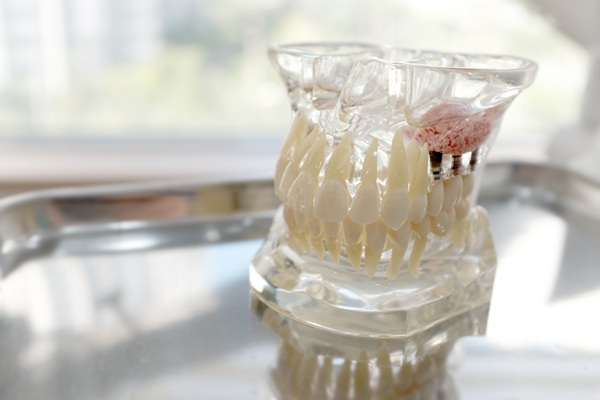When Bone Grafting is Needed for Dental Implants

If your jawbone structure is not robust enough to support dental implants, you may require bone grafting. It's important to understand what bone grafting is and how it is an important part of having dental implants. Let's take a closer look at bone grafting and when you may need them for dental implants.
When patients need dental implants
There are multiple reasons why patients may be missing teeth. Excessive tooth decay, gum disease, or shattered teeth can cause damage that can only be remedied by the actual removal of the affected tooth. Advanced oral health issues like periodontitis can also cause tooth loss.
For patients who are missing teeth or need to have some extracted, they may be able to replace them with dental implants. These are artificial tooth roots that will be screwed into the jawbone to replace the missing teeth. The dentist can then attach a dental restoration onto the implants, such as crowns or dentures.
Some patients choose to get dental implants for cosmetic and self-confidence issues, particularly if they are missing multiple teeth. However, dental implants can also raise the quality of their life, allowing them to chew, eat, and other everyday functions. Additionally, dental implants can prevent bone tissue loss, as the artificial posts stimulate the jawbone similarly to natural tooth roots.
An overview of bone grafting
In some cases, people may have an insufficient amount of bone density to support the implants. This is more often the case when teeth have been missing for a long time. To fix this, dentists can add bone to your jawbone through a procedure called bone grafting. There are a couple of specific kinds of bone grafting, including:
- Socket preservation: This procedure is done immediately after the dentist removes the tooth to prevent additional bone loss.
- Sinus augmentation: The dentist adds bone tissue to the patient's upper jaw to strengthen it for future implant placement.
Regardless of the kind of bone grafting material, it will take many months for the bones to fuse with the patient's jawbone to provide the necessary support for dental implants.
What to expect from bone grafting
To determine whether bone grafting is the best option for the patient, the dentist will take 3D images of the mouth and examine the bone structure. If the existing structure is insufficient for implants, the additional bone must be added through a grafting procedure.
The surgery itself is a low-risk procedure. The dentist will cut into the patient's gums and cut a hole in the jawbone. They will then fill the space with the bone graft and seal the incision. In cases where the patient uses bone tissue from a different part of their body, the dentist will need to harvest a small piece from a predetermined area, such as the chin or hip.
Risks and side effects of bone grafting include infection, excessive bleeding, nerve damage, and unsuccessful grafts. However, it is important to note that these are uncommon outcomes, and the procedure itself is relatively safe.
Recovering from bone grafting
Depending on the size of the bone graft, it can take about a week for the patient to initially recover. However, it is important to remember that it takes at least three months for the bone graft to fully integrate with the jawbone. For larger bone grafts, it can take an average of nine to 12 months to fully heal.
Ask your dentist about bone grafting
Bone grafting can be a complex dental treatment. Reach out to our team to learn more about whether bone grafting is a solution for you and what you can expect throughout the process. Call us at our Lithia Springs office to schedule an appointment.
Request an appointment here: https://www.claudedaniel.net or call Claude P. Daniel, DDS at (770) 983-6797 for an appointment in our Lithia Springs office.
Check out what others are saying about our dental services on Yelp: Will I Need a Bone Graft for Dental Implants in Lithia Springs, GA.
Related Posts
A root canal treatment is capable of retaining the natural tooth structure and replacing the damaged pulp with a dental filling. This procedure has a reputation of being painful. Even so, many people still have it. If you want to know how common a root canal treatment is, here are the details.Studies show that dentists…
With all the different specialties in dentistry, it is hard to know what is handled by your general dentist and what is handled by a specialist. This makes it more difficult than it should be to figure out who to consult when you have a problem or potential issue with your oral health. To help…
Root canal treatment may seem intimidating at first, but the more prepared you are the less likely you are to experience anxiety. Continue reading to learn how to prepare for this procedure. The following review discusses three tips you can use to prepare properly ahead of your scheduled root canal treatment.You can prepare for a…
Even though dentistry consists of many different services, you might be surprised to learn that many of them are performed by a general dentist. While certain specialists handle certain procedures, a regular dentist takes care of many of the more common or popular services.We have put together our list of the top 5 services offered…
